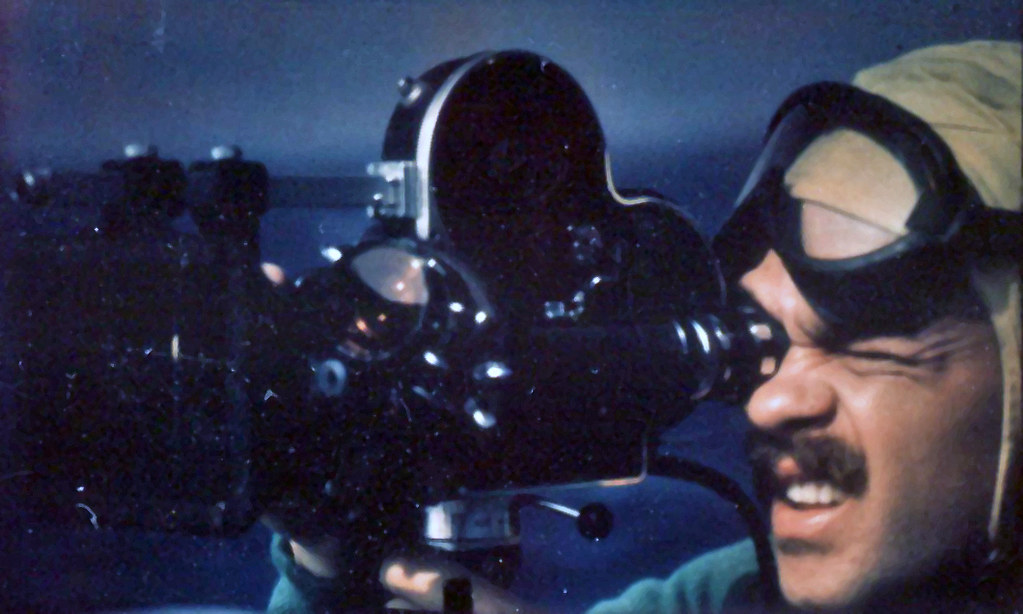
SUMMARY
Role
Director
Intention (SMART Goal)
By January 28, as part of my film team, I will explore the film director’s skill pathway by following Epic Light Media’s “Film Blocking (It’s easier than you think)” and FX home’s “Making an Effective Horror Movie|Advice from Award-Winning Directors” to create a logical blocking sequence that will evoke the mood of a horror film in our session 3 project.
PRE-PRODUCTION – INQUIRY
Leader(s) in the Field / Exemplary Work(s)
Jonathan Demme is widely known for directing the film The Silence of the Lambs. Other exemplary works include Rachel Getting Married, Philadelphia, The Manchurian Candidate, and more. The Silence of the Lambs is a great example of Jonathan Demme’s style and film technique. Demme is known for his use of breaking the fourth wall and his signature close-up shots.
Training Source(s)
- Triangle method (basic blocking method)- wide shot, over the shoulder of character one, over the shoulder of character 2 (1:15)
- Power dynamics- analyze the power dynamics of a scene so that you can shoot your characters accordingly; one winner, one loser (2:00)
- Shapes- creating lines in a scene focuses the viewer’s attention on the subject (2:27)
- “move actors every 20-30 seconds” so that the scene isn’t so boring if it’s just two people talking (3:02)
- Moving master at the beginning of a scene creates interest (3:47)
- “behind the action” staging (5:00)
- “walk and stop” staging (5:29)
- “stop and walk” staging (5:41)
- Don’t break the 180 degree rule (5:48)
- give something for your audience to identify in the antagonist that “rubs against our personal fears” (2:26)
- giving your antagonist a motivation that the audience can understand can help add depth (2:31)
- “never make the big bad all bad” (2:43)
- when creating a “scare”, pacing and build-up are very important (2:52)
- “a good horror will play heavily with suspense” (4:17)
Project Timeline
- Brainstorm ideas
- Create storyboard
- Present storyboard to class
- Create slideshow
- Decide on location
- Write screenplay
- Prepare blocking for each scene
- Gather props, costumes, etc.
- Make peanut gallery
- Set up shots
- Film all scenes
- Put scenes/shots into Google Drive folder
- Decide on which scenes to keep/get rid of/reshoot
- Label final shots
- Put clips in order
- Record all sounds/dialogue and make music
- Put audio into Google Drive and label
- Put audio in and sync up
- Make finishing touches
- Export film
- Add evidence to slideshow
- Present film
Proposed Budget
PRODUCTION – ACTION
The (FILM, SOUND, or GAME Creation)
Skills Commentary
As director, my skill that I was trying to focus on for this film was creating blocking that evoked the mood of a horror film. You can see this skill in the opening scene when Chris is sitting in the corner of the room.
POST-PRODUCTION – REFLECTION
21st Century Skills
Ways of Thinking (Creativity, Innovation, Critical Thinking, Problem Solving)
We solved problems like absences due to Covid by communicating with each other outside of school and coming in early to finish the film. We also had setbacks in production in terms of film location, props, and time.
Ways of Working (Communication & Collaboration)
Our team did a great job of communicating especially since two team members were absent due to Covid. We also did a good job collaborating by sharing ideas to come up with the best, finished product.
Tools for Working (Info & Media Literacy)
We used Google Drive to organize our files, Premiere Pro for editing, Trello for our to-do list, Celtx for the script, and we also used the scrum process to keep our process organized.
Ways of Living in the World (Life & Career)
This production session really helped me with real-world skills like time management and communication.
Reactions to the Final Version
“I liked your decision to add the black screens in between scenes to build suspense and emphasize the fact that something is off” -Danial
This shows that I accomplished my goal of making a film that evoked a mood of a horror film by making decisions as a director.
Self-Evaluation of Final Version
Simple: We didn’t over add detail or storyline so as to keep the film easy to understand.
Unexpected: Our film had unexpected plot twists that kept the audience entertained.
Concrete: Our film was memorable because of the simplicity and surprising storyline.
Emotional: Our film evoked an eerie emotion and left the audience somewhat uncomfortable.
What I Learned and Problems I Solved
Problems that I solved in this session of production were time management and not having certain things we needed. Time management was hard for our team this session due to absences and setbacks but we solved this by coming in early to finish up the film and making things as simple as possible to have a quality finished product. We solved the problem of not having certain supplies or location by finding alternatives.
Grammar and Spelling
Grammarly
Editor
Kenny